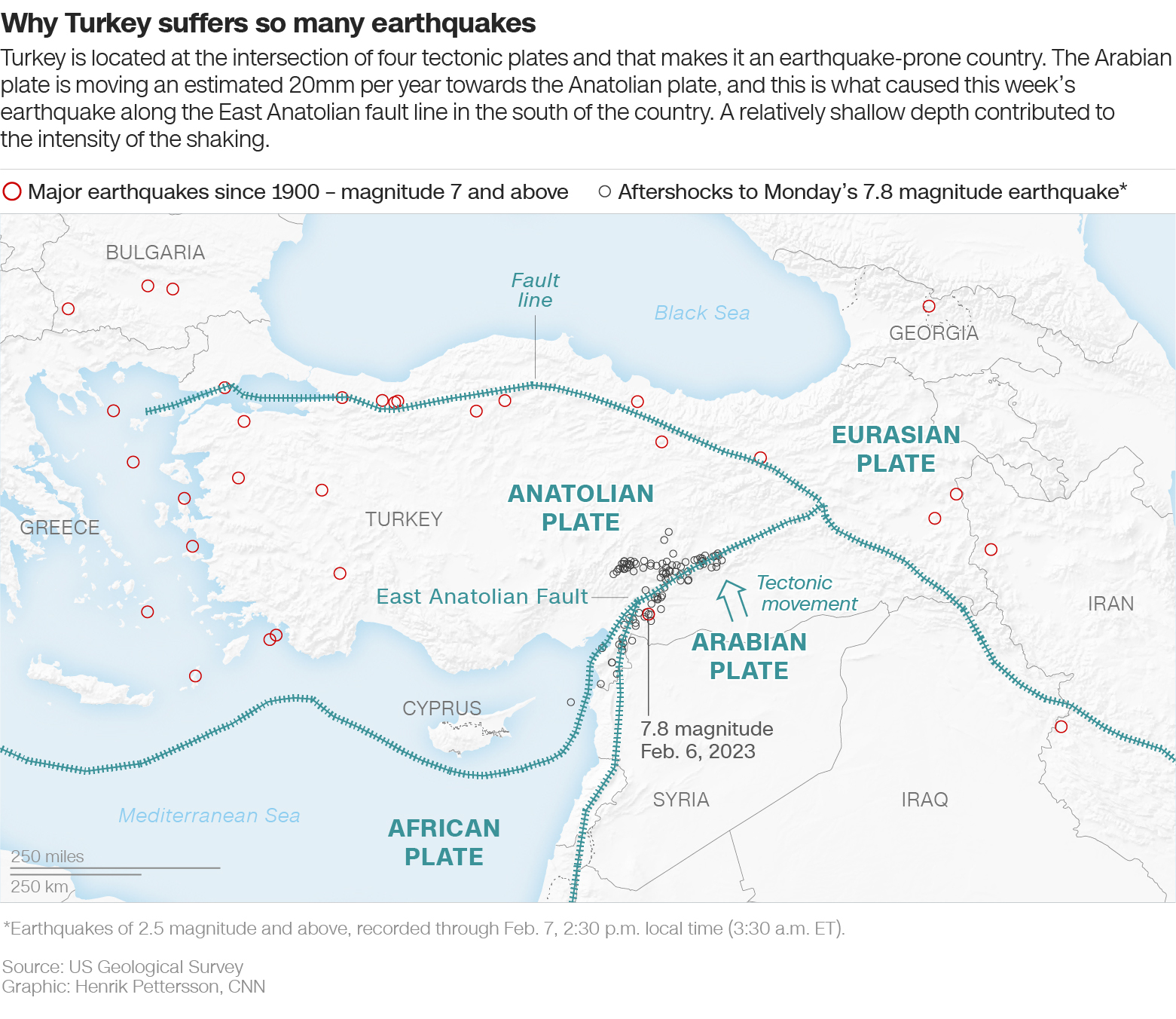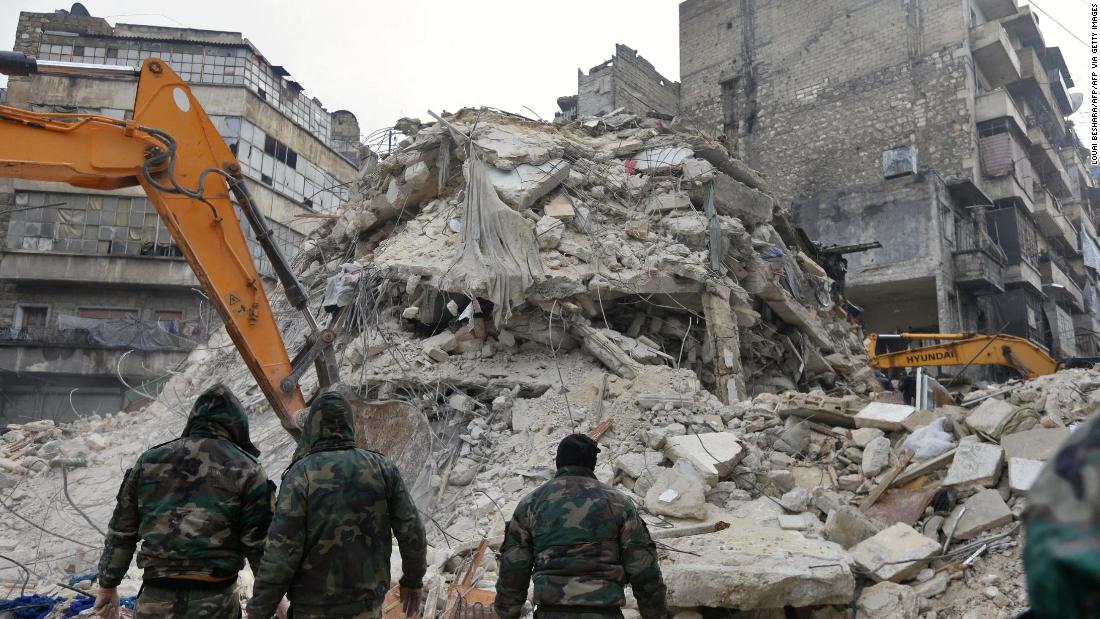[ad_1]
Turkey is no stranger to strong earthquakes, as it is situated along tectonic plate boundaries.
CNN’s meteorologist and severe weather expert Chad Myers said, “we always talk about the epicenter, but in this case we should talk about the epi-line.”
Two massive tectonic plates – the Arabian and the Eurasian – meet underneath Turkey’s southeastern provinces. Along this fault line, “about 100 miles from one side to the other, the earth slipped,” Myers continued.
Seismologists refer to this event as a “strike slip” – “where the plates are touching, and all of a sudden they slide sideways,” Myers said.

In a “strike slip,” the plates move horizontally, rather than vertically. “Why that matters is because the buildings don’t want to go back and forth. And then the secondary waves begin to go back and forth as well,” Myers added.
Because of the nature of this seismic event, aftershocks could last “for weeks and months,” according to CNN meteorologist Karen Maginnis.
One of Turkey’s more than 100 aftershocks, as recorded by US Geological Survey, measured at 7.5.
Source link

